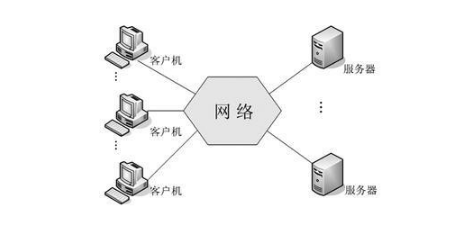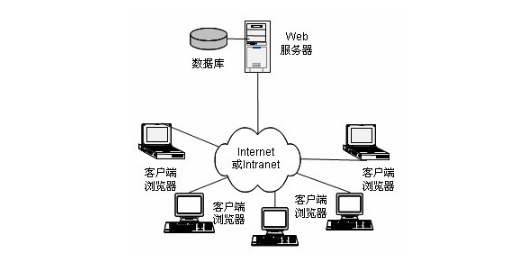Oracle Database, also known as Oracle RDBMS, or Oracle for short. It is a relational database management system of Oracle Corporation. It is a product that has been at the forefront of the database field. It can be said that the Oracle database system is a popular relational database management system in the world. The system has good portability, convenient use and strong functions, and is suitable for all kinds of large, medium, small and micro-computer environments. It is a high-efficiency, reliable, high-throughput database solution.
ORACLE database system is a set of software products provided by ORACLE Company (Oracle) with distributed database as the core. It is one of the most popular clients/servers (CLIENT/SERVER) or B/S architecture database. For example, SilverStream is a kind of middleware based on database. ORACLE database is the most widely used database management system in the world. As a general database system, it has complete data management functions. As a relational database, it is a complete relationship product; as a distributed database, it realizes distribution. Processing function. But all of its knowledge, as long as you learn ORACLE knowledge on a model, you can use it on various types of machines.
The latest version of Oracle Database is Oracle Database 12c. Oracle Database 12c introduces a new multi-tenant architecture that makes it easy to deploy and manage database clouds. In addition, some innovative features maximize resource utilization and flexibility. For example, Oracle Multitenant can quickly integrate multiple databases, while Automatic Data Optimization and Heat Map can compress data and layer data at a higher density. These unique technological advancements, combined with major enhancements in availability, security and big data support, make Oracle Database 12c an ideal platform for private and public cloud deployments.
Oracle database is the most widely used database management system in the world. As a general database system, it has complete data management functions. As a relational database, it is a complete relationship product; as a distributed database, it realizes distribution. Processing function. But all of its knowledge, as long as you learn ORACLE knowledge on a model, you can use it on various types of machines.
With the development of network technology, Oracle database has been widely used in various fields. The application system structure based on Oracle database is mainly divided into client/server structure, terminal/server structure, browser/server structure and distributed database system structure.
1. Client/server structureThe client/server (C/S) structure is a two-tier structure. In the C/S structure, an application needs to be installed on the front-end client to access the back-end database server through a network connection. The input of the user information, the processing of the logic, and the return of the result are all completed on the client side, and the background database server receives the operation request of the client to the database and executes it.

The advantage of the C/S structure is that the client and the server can adopt different software and hardware systems. The advantage of this is that the application and the service are separated, the security is high, and the execution speed is fast; the disadvantage is that the maintenance and the upgrade are inconvenient.
2. Terminal / server structureThe terminal/server architecture is similar to the client/server architecture. The difference from the client/server structure is that all software installation, configuration, operation, communication, data storage, etc. are completed on the server side. The terminal only acts as an input and output device and directly runs the application on the server without Processing capacity. The terminal passes the mouse and keyboard input to the server for centralized processing, and the server transmits the information processing result back to the terminal.
The advantage of the terminal/server structure is that it is easy to implement centralized management, high system security, low network load, and low requirements on terminal devices; the disadvantage is that the server performance requirements are high.
3. Browser / server structureThe browser/server (B/S) structure is a three-layer structure. In the B/S structure, the client only needs to install a browser, and does not need to install a specific application; the middle web server layer It is the bridge between the front-end client and the back-end database server. All data calculation and application logic processing are implemented at this layer. The user enters the request through the browser and passes it to the web server for processing. If necessary, the web server interacts with the database server and returns the processing results to the user.

The advantage of the B/S structure is that the application logic is processed through the web server, which facilitates the maintenance and upgrade of the application. The number of supported clients can be increased by increasing the number of web servers. The disadvantage is that the network connection is increased, the execution efficiency is reduced, and the security of the system is also reduced.
4. System structure of distributed databaseDatabase systems can be divided into centralized databases and distributed databases according to different data distribution methods. A centralized database is a collection of databases in a database server, and a distributed database is a collection of multiple logically related databases distributed on a computer network. Each database has independent processing capabilities and can execute local Applications can also perform global applications over the network

Oracle database is a very popular database system, using many large Oracle websites, which is why many users love it because it has the following outstanding features:
1. It supports distributed database and distributed processing. In order to make full use of computer systems and networks, Oracle allows processing to be divided into database servers and client applications. All shared data management is handled by the database management system's computers, while workstations running database applications focus on interpreting and displaying data. Through a networked computer environment, Oracle combines data stored on multiple computers into a single logical database that is accessible to all network users. Distributed systems are as transparent and data-consistent as centralized databases.
Portability, compatibility, and connectivity. Because Oracle software runs on many different operating systems, applications developed on Oracle can be ported to any operating system with little or no modification. Oracle software is compatible with industry standards, including many industry-standard operating systems, and applications developed can run on any operating system. Connectivity means that ORALCE allows different types of computers and operating systems to share information over the network.
2, it supports large database, multi-user high-performance transaction processing. Oracle supports the largest database, which can be as large as a few hundred gigabytes, making full use of hardware devices. Support a large number of users to simultaneously execute various data applications on the same data, and minimize data contention to ensure data consistency. System maintenance has high performance, Oracle can work 24 hours a day, normal system operation (backup or individual computer system failure) will not interrupt the use of the database. Controls the availability of database data, which can be controlled at the database level or at the sub-database level.
3. Oracle adheres to industry standards for data access languages, operating systems, user interfaces, and network communication protocols. So it is an open system that protects the user's investment. The American Institute of Standards and Technology (NIST) tests Oracle7 SERVER and is 100% compatible with the second level of the ANSI/ISO SQL89 standard.
4. Implement security control and integrity control. Oracle provides system-reliable security to limit access to monitored data. Oracle enforces data integrity and specifies criteria for acceptable data.
For Sony:
For Xperia Z4V, For Xperia Z3V
For Google:
For Nexus 4, For Nexus 5, For Nexus 6, For Nexus 7
For MOTORALA:
For Moto Droid Turbo, For Moto Droid Turbo 2, For Moto Droid 5
For NOKIA:
For Lumia 920, For Lumia 928, For Nokia Lumia 93, For Lumia 950, For Lumia 950 XL, For Lumia 1020, For Nokia Lumia 1050, For Nokia Lumia 822, For Nokia Lumia 735
For HTC:
For HTC ONE MAX T6, For HTC Incredible 4G, For HTC ONE mini 2, For HTC Droid DNA
For LG:
For LG Nexus 4, For LG Nexus 5, For LG G Pro, For LG D1L, For LG LTE2
For Iphone:
For Iphone8/X/XR/XS Max
Compabile Models:
For Samsung:
For Galaxy S6, For Galaxy S6 Edge, For Galaxy S6 Edge+,
For Galaxy S6 Active, For Galaxy S6 Duos, For Galaxy Note Edge,
For Galaxy S7, For Galaxy S7 Edge, For Galaxy Note 5
For Galaxy S8, For Galaxy S8 Plus, For Galaxy Note 8
For Galaxy S9,For Galaxy S9 Plus
For Others:
Guangzhou HangDeng Tech Co. Ltd , http://www.hangdengtech.com